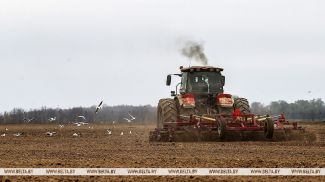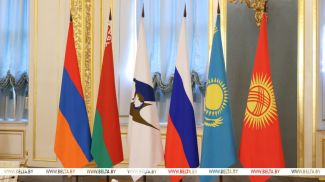MINSK, 19 August (BelTA) – Belarus intends to raise the R&D intensity (R&D expenditure as a percentage of the gross domestic product) up to 1% within the next five years. The figure was mentioned by Aleksandr Gotovsky, Deputy Director for Science of the Economics Institute of the National Academy of Sciences of Belarus, at the press conference held on 19 August to discuss Belarusian science and the national innovation system, BelTA has learned.
Aleksandr Gotovsky said: “The Economics Institute provides general methodological support for the program designed to guide Belarus' social and economic development over a period of five years. Just like any program this one includes an innovation component and its own target indicators, which we are supposed to reach over the course of five years. Three indicators measure the development of innovations. The R&D intensity is the most important one. It has been varying from 0.55% to 0.60% of the gross domestic product for the last few years. We intend to raise it to 1% in the future. It may seem small but if we compare it to other countries, then, for instance, in the Eurasian Economic Union only Russia boasts R&D intensity as high as 1% of the GDP. Kazakhstan's is 0.14%, Armenia's 0.23%, and Kyrgyzstan's 0.12%. Which means we have a good average indicator in the Eurasian Economic Union.”
According to the source, not only the state budget will finance Belarusian R&D. The share of non-budget funding for science has been at 55-59% for the last few years. Funding coming from the real sector, from commercial organizations totaled 64% in 2020. “It is virtually the average European level. This figure stands at 66.5% in Europe. Yes, there are some countries where the real sector is more active with regard to innovations. For instance, the figure is 79% in Japan and 80% in South Korea. But as a matter of principle we have a good average European figure and even exceed figures of Eastern Europe countries.”
The share of innovation active organizations in the processing industry is another target indicator specified by the innovation section of the social and economic development program. “The figure has grown rather seriously over the last ten years. It was 16.6% in 2010. It reached 29.6% in 2020. The 2021-2025 program provides for securing it at over 30%. On the whole, we are about to reach this goal,” the specialist pointed out.
The official noted that international statistics uses a production sector average (in addition to the processing industry it includes the mining industry, power engineering, and utilities industry). “Belarus' indicator is much lower here. It has been at 26.2% for the last few years. To compare, in Russia it slightly exceeds 9%, in the European Union – 50%, in China it is slightly less than 40%. On the whole, we follow the international trend quite well,” Aleksandr Gotovsky stated.
The share of shipped innovative products in the total volume of products shipped by processing industry enterprises is the third indicator the social and economic development program mentions. “This figure has increased rather well. It was 17.1% in 2010. It reached 20.9% in 2020. We intend to keep it steady at 21% and above. We are about to reach this figure. International statistics provides the production sector's total. In Belarus this figure stands at 18% since conventional industries are included into this circle of enterprises. The European Union's average is 13% while Germany's is slightly less than 15%. On the whole, our indicators look rather well in comparison with international statistics.”











